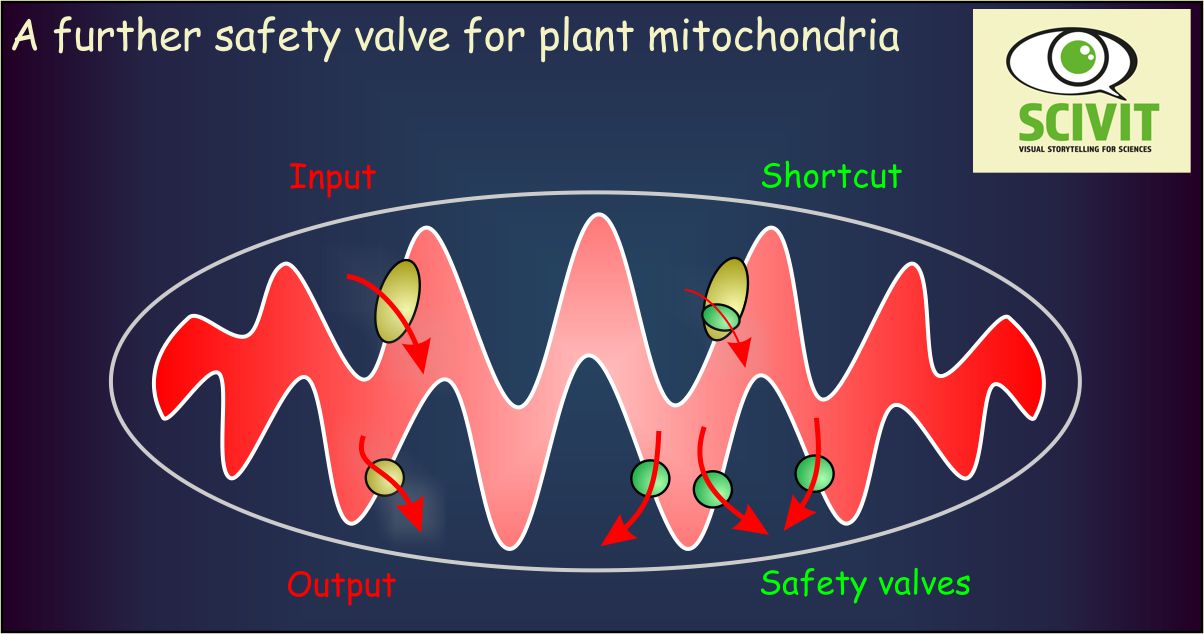
A further safety valve for plant mitochondria
Mitochondria and the oxyhydrogen reaction
Mitochondria are converting the energy from oxyhydrogen into a form suitable for driving biochemical processes (ATP). Energy conversion is achieved by coupling the transfer of electrons from hydrogen to oxygen to the generation of an electroosmotic potential over the inner mitochondrial membrane. Energy stored in this potential is subsequently used for producing ATP.
The risks of working with oxygen
Oxyhydrogen is very explosive and even within mitochondria oxygen is a hazardous chemical. Bottlenecks in the process described above are particularly dangerous, since they can result in the formation of particularly destructive forms of oxygen. The situation is particularly dangerous in plant mitochondria. Under high-light conditions photosynthesis will produce large amounts of reducing power. Mitochondria have to dispose off this power to prevent photooxidative damage to chloroplasts.
Mitochondrial safety valves
Plant mitochondria therefore have a number of safety valves preventing a situation where ATP-production cannot keep pace with energy input. Such safety valves like the alternative oxidase, the uncoupling protein or mitochondrial pulses, allowing to dissipate energy without producing ATP. The new system described by Lee et al. is an ion channel from the inner mitochondrial membrane (MSL1). Close relatives of this channel are activated by mechanical stress and serve for dissipating osmotic stress. MSL1, in contrast, does not protect mitochondria against osmotic stress but helps dissipate high electroosmotic potential.
Neueste Kommentare